Introduction
Recently, I had the opportunity to test out a new system. Check out my previous article, An Interesting Chip, for my first impressions. A quick summary: I was very surprised when I first found out I had been loaned an Engineering Sample CPU, a processor that technically hadn’t been released at the time. What is that processor? It’s the Intel Pentium J6425, a processor based on Intel’s second-generation 10nm process (although they want you to believe it’s the first). It is based off of Intel’s “Tremont” Atom cores, which succeed the 14nm “Goldmont” and “Goldmont Plus” cores. While Goldmont has the older Gen 9.5 integrated GPU, found in Intel’s Skylake-based processors, Elkhart Lake has the newer Gen11 Graphics, also found in Ice Lake. Here are the basic specs for our test processor:

And this is the test system:
| CPU | Intel Pentium J6425 |
| RAM | 2×4 GB DDR4-3200 SODIMM |
| Storage | 64 GB mSATA, 32 GB MLC eMMC |
| GPU | Intel Gen11 32 EUs |
All benchmarks were ran off the mSATA drive.
Here are the comparison systems:

The closest equivalents to the Elkhart Lake, at least on paper, are the Intel Celeron J3455 (its predecessor) and the Intel i5-3330, which is an older processor, albeit with a much higher TDP. Of course, since our Elkhart Lake processor has a much newer and better microarchitecture, we expect it to have better performance.
Some other interesting comparison points are the Intel i5-6300U and the i7-7700HQ. These are both older Skylake processors, with higher TDPs than the Pentium J6425. It will be interesting to see if their higher power envelopes allow them to outpace the ultralow-power Pentium, even though they are made on an older, less power efficient 14nm node.
Benchmarks
UserBenchmark

UserBenchmark is a synthetic benchmark which has a CPU, GPU, SSD/HDD/Flash Drive, and RAM sub-tests. Although it is disregarded by the tech community, and for good reason, it is still a good measure of:
- How well a machine is performing relative to similar machines, indicating that there might be something wrong with the system.
- How well devices from the same brand compare to each other.
Furthermore, UserBenchmark is a mostly gaming focused benchmark, as shown by its new feature, SkillBench. However, its benchmarking algorithm has mostly favored Intel CPUs and Nvidia GPUs compared to the alternative AMD chips. However, this article only has Intel chips being compared to each other, so I believe UserBenchmark will serve well as a general indication of how fast each processor is.

Right off the bat, we can see the J6425 is a huge improvement over its predecessor, the J3455. However, the higher-powered i7-1165G7 is 41% faster than the Elkhart Lake processor. This is due to it having different cores(Tremont Atom cores, versus the Willow Cove cores, which are used for laptops and small desktops). Of course, the Pentium J6425 does not have hyperthreading, which hampers its multithreaded performance. The i5-3330 also outstrips the Pentium J6425. Although it is an older processor, it has a higher power limit which allows it to maintain high clockspeeds for an extended period of time. On the other hand, the Elkhart Lake’s low TDP means that it can only boost for a few seconds before settling at a lower frequency.

The newer Gen11 graphics results in a huge improvement over the Intel HD 500 integrated GPU in the Celeron J3455. It’s 3.68 times as fast! The combination of faster memory, a better GPU design, and more EUs results in a huge uplift in GPU performance. However, the main improvement is actually in the video encoder/decoder blocks, since it now supports newer video standards such as AV1 and VP9.
Of course, it is still easily beaten by brawnier GPUs. The Nvidia GTX 1070 has 1920 CUDA cores, and the Pentium J6425 has only 256 cores. Of course, they are completely different architectures, but it is a sizable difference nonetheless. The Xe graphics in the i7-1165G7 have 96 EUs, versus 32 on the Elkhart Lake. Also, the Elkhart Lake has Gen11 EUs instead of Xe(Gen 12), however, this is a superficial difference. So, on paper, we would expect a 3x difference between the two GPUs. However, in reality, the Tiger Lake processor’s iGPU is more than 4.5x times as fast! This is due to its exceptional memory bandwidth. It uses LPDDR4X-4266 which is much faster than the DDR4-3200 in the Elkhart Lake system.
Blender 2.92 Render Benchmark

Blender Open Data is a rendering benchmark, similar to Cinebench, which renders different scenes on the CPU/GPU and times how long they take. This benchmark is useful for determining sustained CPU performance over a long period of time, especially with slower devices.
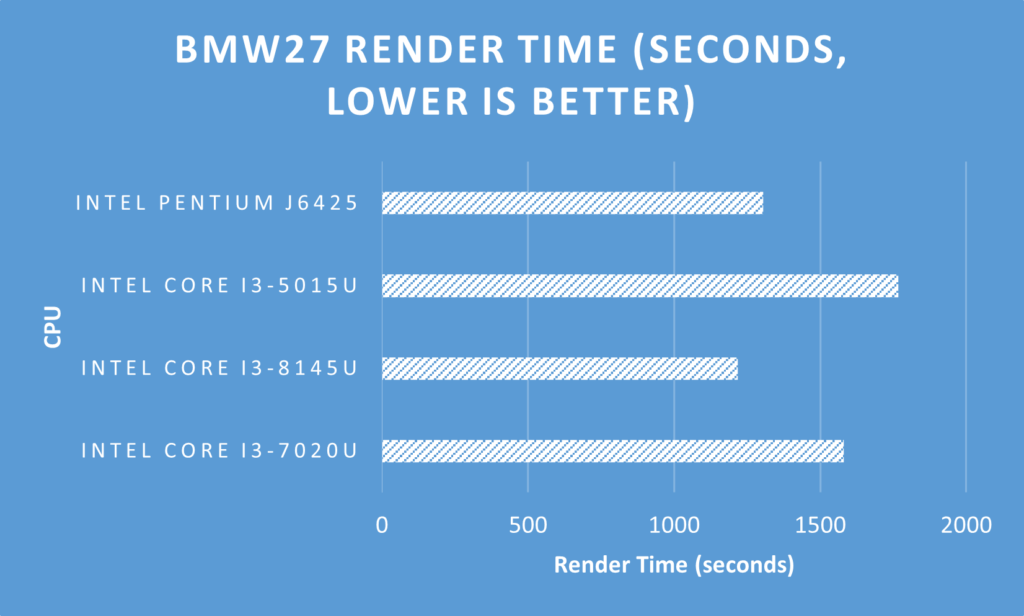
We can immediately see the J6425 wins out against the i3-7020U and the i3-5015U, two 2 core/ 4 thread processors meant for budget laptops. Interestingly, the i3-8145U, which is also a 2 core/ 4 thread chip, manages to outstrip the J6425. This is probably because the former has a boost frequency of 3.9 GHz, compared with a “burst” frequency of 3 GHz for the latter. This presumably makes up for any differences in the microarchitecture.
Again we can see the 8145U is able to beat out the Elkhart Lake chip. This is most likely due to the fact that the i3 chip is able to sustain a higher clockspeed for longer than the Pentium J6425.
Interestingly, in these two scenes, the Pentium J6425 is noticeably faster than the i3-8145U. It’s possible that they are able to better utilize the extra cores.
Geekbench 5

Geekbench 5 is a cross-platform benchmark that aims to compare different computers’ performance. It’s one of the few benchmarks where a mobile processor can be compared to a server one. Furthermore, instead of arbitrary number crunching, Geekbench has many real-world benchmarks such as machine learning, PDF rendering, and face detection. It includes both CPU and GPU benchmarks as well.
The low-power Elkhart Lake processor, consuming a maximum of 10 watts, understandably loses out to its higher-wattage competitors, namely the i7-7700HQ(45 W TDP), the i5-3330(77 W) and the i7-1165G7(28 W). However, it is almost twice as fast as the older i3-5015U. Amazingly, the Pentium J6425 is only about 8% slower than the i5-3330, despite consuming less than a sixth of the power. Of course, the Elkhart Lake processor is built on Intel’s latest 10nm SuperFin process, while the i5, launched in 2012, is based on a 22nm process.
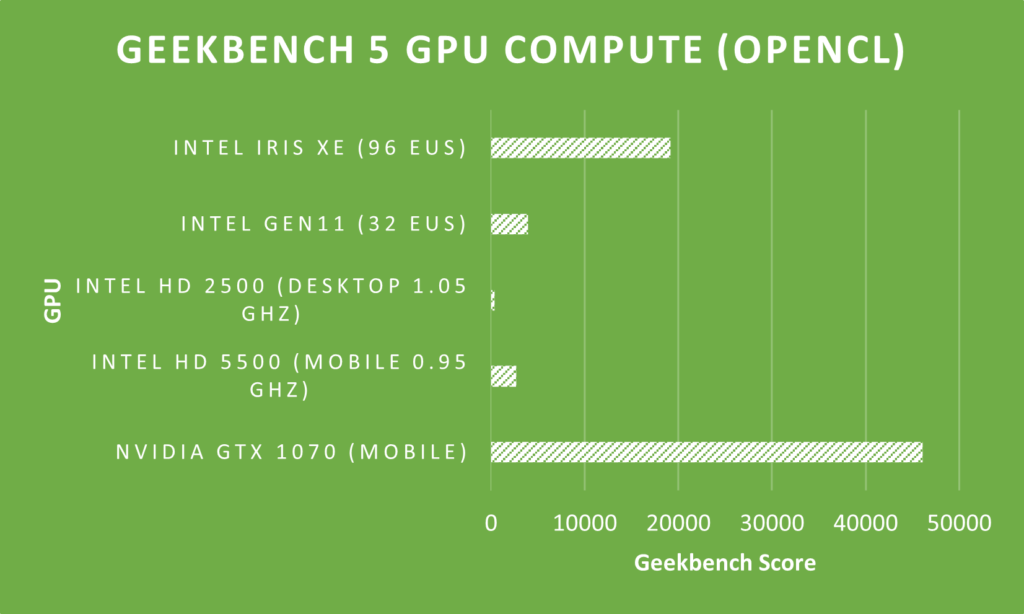
As we saw before, Intel’s Gen11 Graphics are a huge improvement over the older integrated GPUs found in Skylake and Broadwell. However, it is still limited by memory bandwidth and the number of cores.
Conclusion
The Intel Pentium J6425 is a huge improvement over its 14nm predecessors, such as the Celeron J3455. With a new CPU architecture came a new GPU architecture, resulting in impressive performance boosts for many different workloads.
Of course, raw performance isn’t useful in a vacuum. The Pentium J6425 is meant for IoT applications, such as a camera gateway, a temperature logging device, or a security system. Here, the increased power efficiency is a huge help. The increased GPU performance means real-time video classification or speech recognition can be done, something that was not possible with its predecessor.
Overall, the Elkhart Lake family of processors is a prodigious improvement over its predecessors, which were built around a 14nm process and variants of the Skylake architecture. However, with DDR5 on the horizon, it may be a good idea to wait for systems which support the new memory standard.

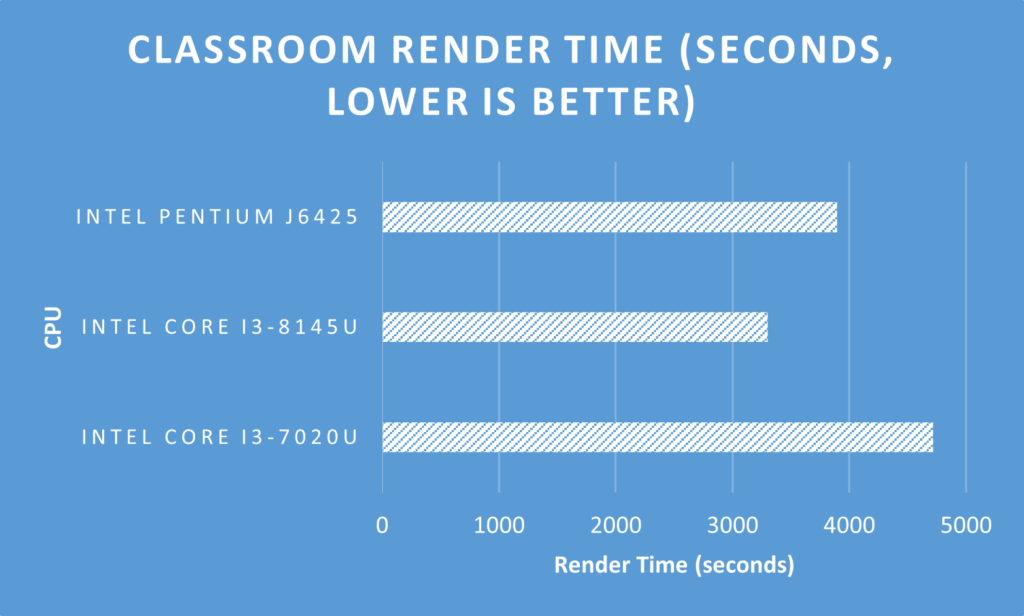
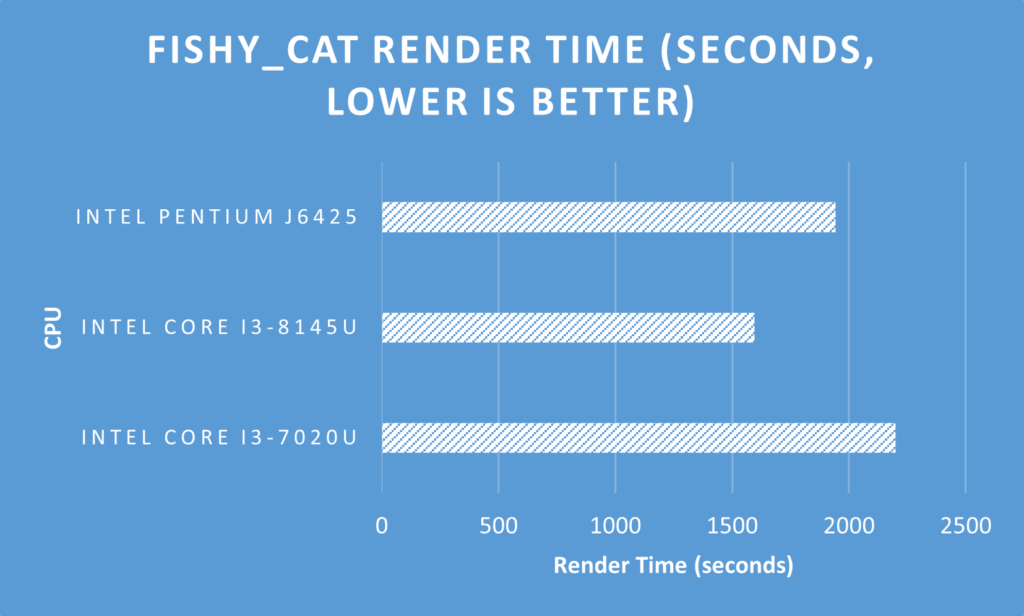
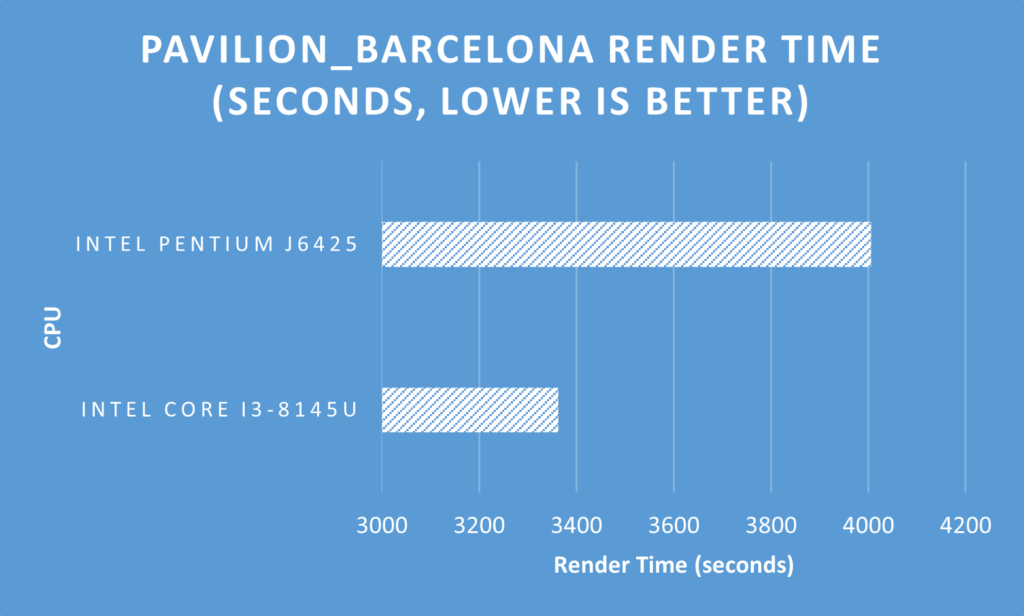
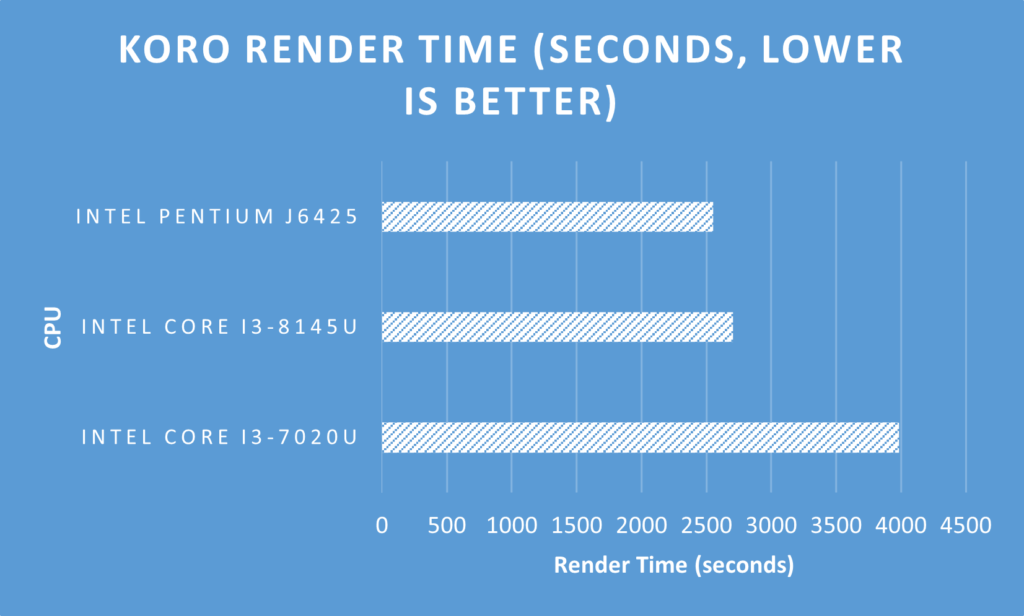
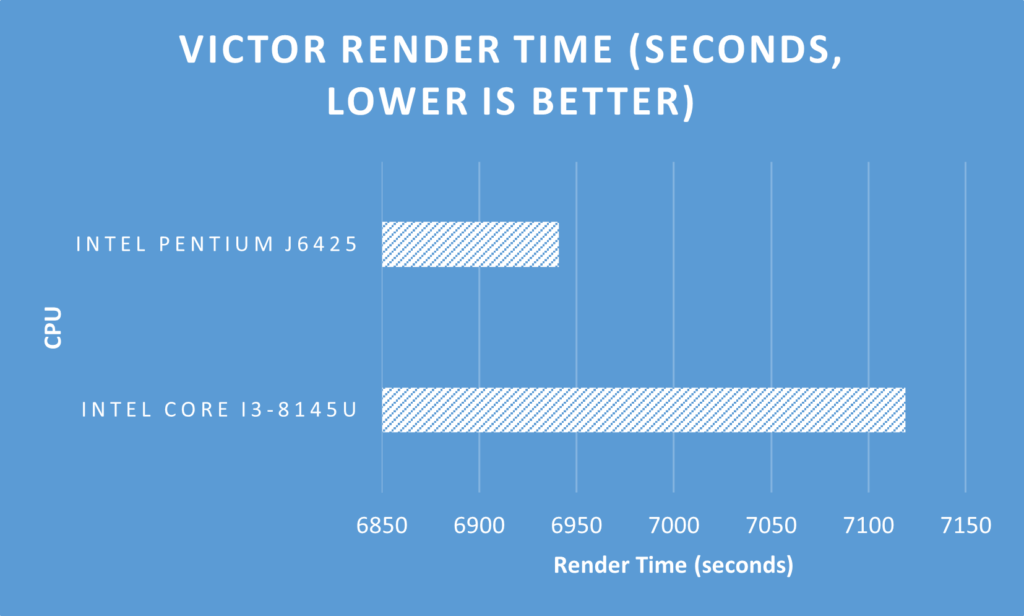
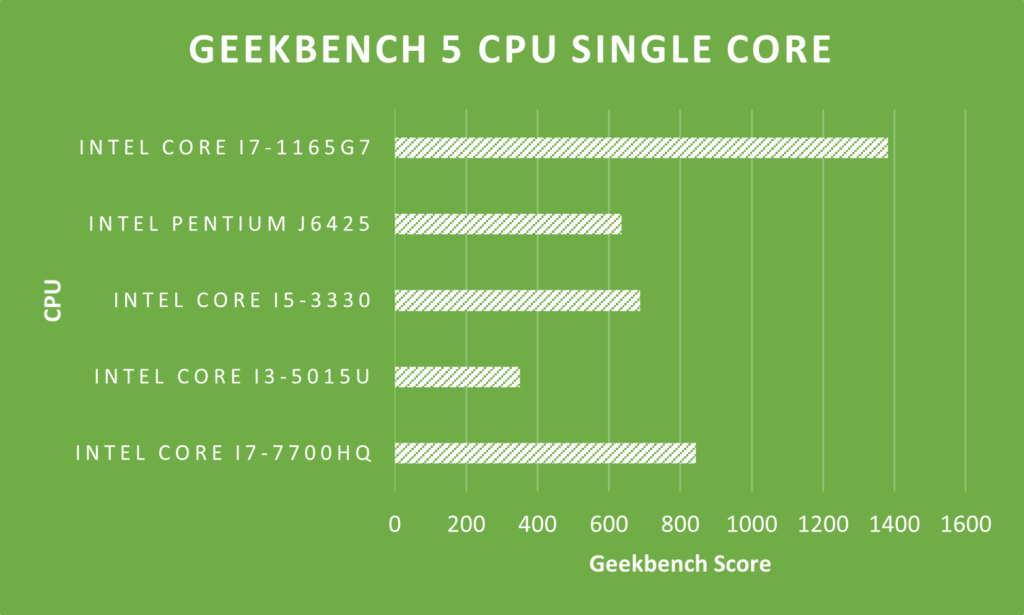







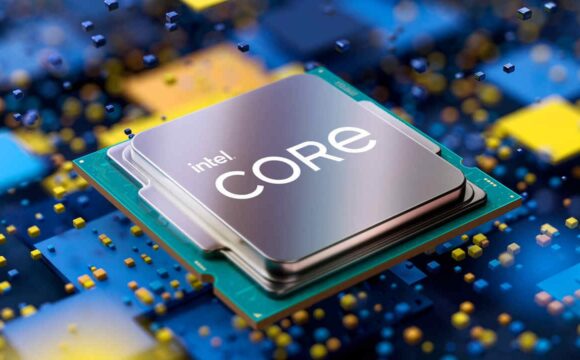
1 Comments